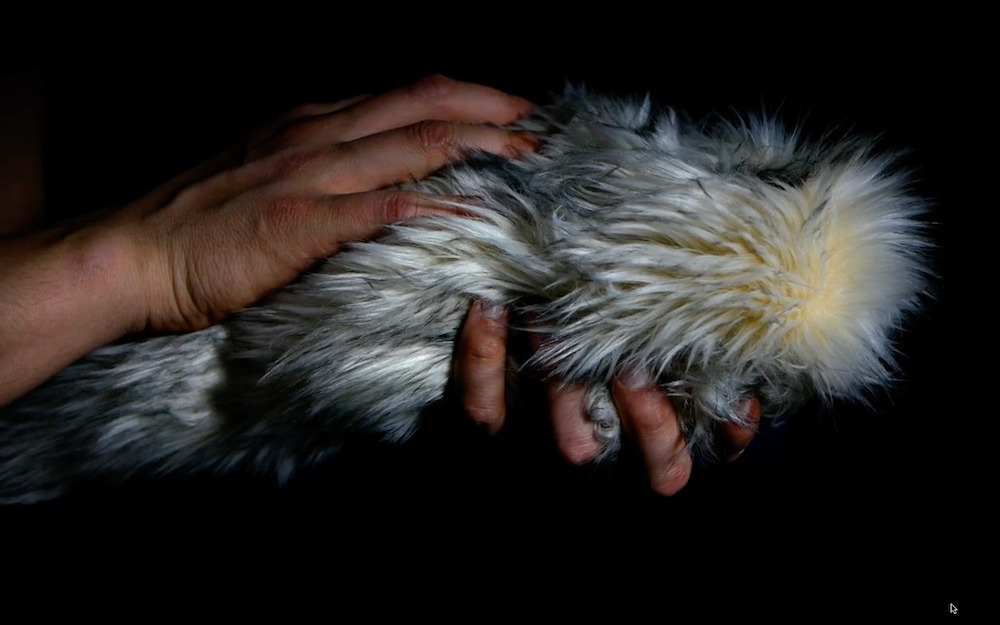What robots can learn from therapists
A transformative experience working with very sick children changed Paul Bucci’s mind about how robots used in human therapy should be designed.

An example of a robot designed for therapy. Credit: Paul Bucci
A transformative experience working with very sick children changed Paul Bucci’s mind about how robots used in human therapy should be designed.
Bucci, a doctoral student in UBC’s department of computer science, researches how robots can be used in therapy to help comfort humans, like PARO, a cute seal pup robot that wiggles and blinks and is used in dementia wards for companionship. After spending time at Canuck Place Children’s Hospice, he says designers of therapeutic robots can take lessons from therapists – and leave the actual therapy up to humans.
What are therapeutic robots?
Human-robot interaction (HRI) research is a wide field, and generally explores how humans can interact with robots, from powerful manufacturing machines to the PARO, safely, effectively and in ways that works for us. Because we are emotional animals, often HRI researchers have to account for emotions in some way.
There aren’t many therapy robots being used, but they are designed to facilitate interactions with people, often patients or vulnerable people, and as a tool for socializing.
Robots can be amazing tools for therapy – they can be animate and soft and vibrating, they can make a difference for patient comfort, and they’re cheaper and cleaner than a pet.
Why were you at Canuck Place and what did you learn?
The experience was transformative and made me rethink everything about my approach to computer science. Healthcare can sometimes seem to value hard numbers, but their metrics are things like, are the kids happy? Are they learning? Are their families well-supported?
I was there for about six months in 2019 for my research and watched staff engage with kids through “intensive interaction,” which is like making little in-the-moment languages to communicate. Many of the children are unable to move or are non-verbal, so it takes an empathetic, intuitive human to improvise ways to communicate. I even started taking improvisation classes.
I noticed the staff were using vibrating or squishy toys and I wanted to understand how I could help. You can’t come in there as a roboticist and say, ‘I’m going to make this better,’ you have to go in with humility, and maybe aim to help with just one technological idea.
After my time there, I began to feel that the way we think about emotional interaction with robots was restrictive. I wanted to know what we can do other than attempt to make robots that “solve a problem,” and instead work with the therapy that’s already happening.
Why do therapy robots need therapy?
I suggest that HRI researchers think about emotions as therapists do – that they aren’t inherent and experienced the same by everyone – and use therapeutic techniques when evaluating robots to understand what people are actually experiencing. We could include past experiences when analyzing emotional interactions, for instance, rather than just a scale that isn’t contextualized or explained. Say you designed a robotic dog, and one of the evaluators had been bitten by a dog in the past, so they didn’t like how the robot acted; that would change your understanding of how the robot is working.
If we were to change our thinking about emotions and how to measure them, we wouldn’t waste time designing and running studies that don’t really measure their goal, and ultimately, we could build more emotionally impactful robots.
Why shouldn’t robots be therapists?
Therapy robots are tools to enable or allow therapy. They are often presented as therapeutic in and of themselves, but it’s not the robot that makes for effective therapy, it’s the human agent, such as a nurse or therapist. A therapist is a human who can provide healing or comfort through social interactions with another human. The therapy experience involves many different factors including tone of voice and response to body movement and emotion, not just saying the right thing in the right order.
Technology doesn’t replace people – there’s an idea that the more technology we have, somehow we’re going to produce perfect human happiness. I think realistically these devices can do amazing things, but let’s design them like they’re a boardgame: you don’t play by yourself, it’s about interaction with other people.
Language(s): English (Bucci)
Images and b-roll for media: www.bit.ly/RobotsTherapy



